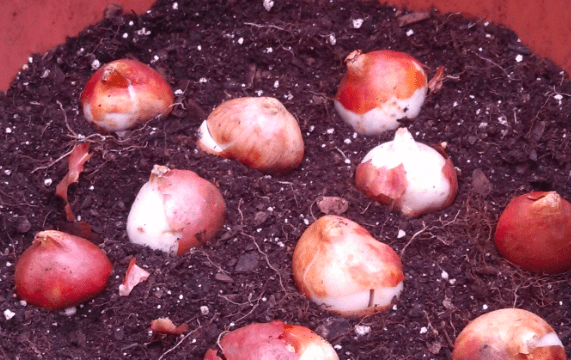If you want to have beautiful tulips in your garden next spring, you need to start preparing now! In this blog post, we will discuss how to overwinter tulips so that they will be in bloom when the weather starts to warm up. Follow these simple steps and you will be able to enjoy these lovely flowers year after year!
Can Tulips Be Overwintered?
Yes, tulips can be overwintered! This process involves storing the bulbs in a cool, dark place over the winter so that they can go dormant. When spring arrives, you will need to replant the bulbs so that they can start growing again.
I recommend overwintering tulips in containers, but not those that are buried deep in the ground. This is because tulips are actually hardy plants that can survive underground during the winter months. However, tulip bulbs in containers are more susceptible to freezing.
It’s usually the frost that kills tulip bulbs, not just cold temperatures. As such, it’s important to protect containerized tulips from frost. One way to do this is to place them in a garage or shed that doesn’t get too cold during the winter months. Another option is to wrap the containers in burlap or straw, which will help insulate them and keep the bulbs warm.
How to Overwinter Tulips?
Now that you know overwintering tulips is possible, let’s discuss how to do it. The first step is to stop fertilizing your tulips in late summer or early fall. This will help the plants focus on storing energy in their bulbs for the winter months.
Next, you will need to dig up the bulbs and brush off any dirt or debris. Inspect the bulbs for signs of disease or damage, and discard any that are not in good condition.

Once you have your healthy bulbs, you will need to cure them before storing them. To do this, place the bulbs on a mesh screen or drying rack in a cool, dark place for about two weeks. This will allow the bulbs to form a protective coating that will help them survive the winter.
After the curing process is complete, you can store the tulip bulbs in a cool, dark place. I recommend using a storage container with ventilation holes so that the bulbs can breathe. You can also wrap the bulbs in newspaper or tissue paper before placing them in the container.
Make sure to check on your stored bulbs periodically throughout the winter. If you notice any that have started to sprout, remove them from storage and plant them immediately.
Protecting Tulips in Containers During Winter
If you don’t want to overwinter your tulips indoors, you can leave them in their containers, but you must take some precautions to protect them from the cold.
First, make sure the containers are made of a material that won’t crack in freezing temperatures, such as plastic or ceramic. Second, choose a location for your containers that is protected from frost, such as against a south-facing wall. And finally, insulate the containers by wrapping them in burlap or straw.
Mulch is a great way to protect tulips in the garden. Apply a layer of mulch around the base of the plants in the soil. This will insulate the bulbs and help them survive until spring.
With a little bit of preparation, you can overwinter your tulips and enjoy their beauty year after year! Just follow these simple steps and you will be well on your way to having a beautiful spring garden.
Replanting Overwintered Tulips
Once spring arrives, you will need to replant your overwintered tulips. Start by removing the bulbs from storage and cold tempering them for a few days. The period of cold tempering will help the bulbs get ready to bloom.
Some people do this by putting the bulbs in the refrigerator to trick the bulbs. Simply leave them exposed in the fridge for a few weeks, and then plant the bulbs in small pots, before placing the bulbs back into the fridge for an additional week.

When temperatures are consistently above 40 degrees Fahrenheit, it’s time to replant your bulbs in the garden. Choose a location that gets full sun and has well-draining soil. Dig holes that are twice as deep as the bulbs, and plant them with the pointed end facing up.
Water the bulbs well after planting, and then fertilize them with a high-phosphorus fertilizer. This will help the bulbs bloom.
Be sure to keep an eye on your tulips as they grow. If you notice any that are not blooming, it is likely because they were not given enough sunlight or water. Move them to a sunnier location and increase their watering schedule until they start to bloom. Be sure to watch for any pests that could eat the tulips.
Conclusion
In conclusion, overwintering tulips are a great way to ensure that you have beautiful flowers in your garden come springtime. By following the steps outlined in this blog post, you can enjoy these lovely blooms year after year! Thanks for reading and happy gardening!
Do you have any tips for overwintering tulips? Share them in the comments below!
Tim is an avid gardener from the UK. He was the founder of PlantCarer.com from 2021 to Sep 2023. He sold PlantCarer.com to Aaron. He has since started his own business called Seed To Supper, which provides new gardeners all the materials you need in a box (pots, seeds, compost and instructions) to grow your own delicious and nutritious vegetables and herbs from start to finish – no garden required.









0 Comments